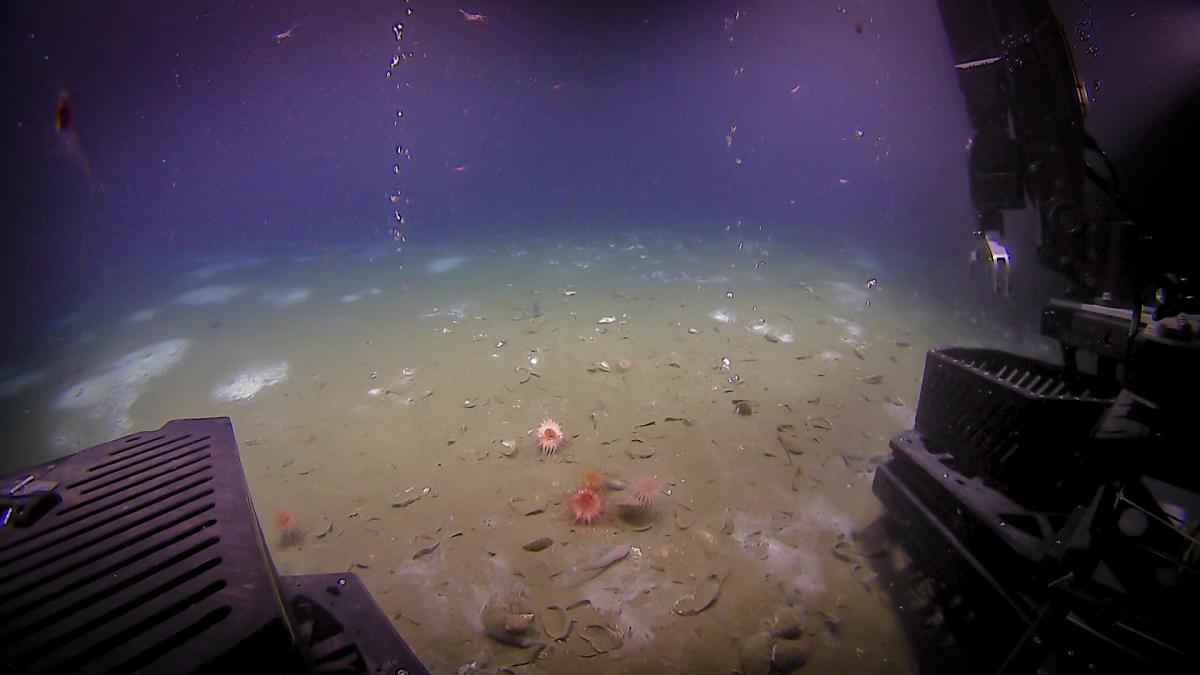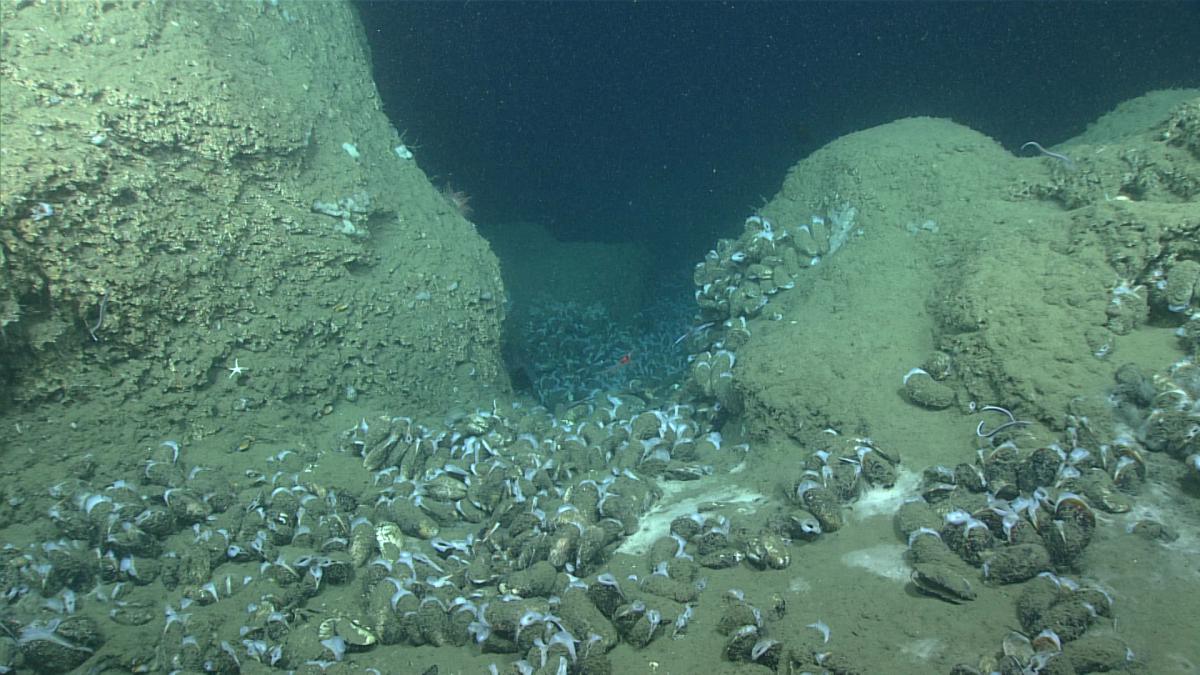NGI Marine Scientist Helps NOAA Explore Methane Seep Field off The NC Coast
August 20, 2019

Two bubble streams emanating from relatively bare seafloor and framed by D2 during the Bodie Island seeps dive. Note patchy distribution of white Beggiatoa bacterial mats in the background and Bathymodiolus shell debris and live mussels in the foreground, along with anemones.
Photo by NOAA Office of Ocean Exploration and Research, Windows to the Deep 2019.
Scientists with the National Oceanic and Atmospheric Administration discovered a methane seep
field off the coast of Bodie Island in 2012, but they didn’t get a look at it until this
year.
Using a remotely operated deep-sea rover, scientists were able to photograph the methane seeps
and the ecosystem they support, including an unusual type of mussel.
“These are a special kind of mussel that are chemosynthetic, and what that means is
they convert chemicals into energy instead of light, so there’s a whole ecosystem that
can exist in the complete dark of the sea floor,” said Adam Skarke, a marine geologist
at Mississippi State University who helped locate the methane seep field back in 2012.
The vessel was able to bring back
photos, samples and detailed information
about a deep sea ecosystem that depends on methane, hydrogen sulfide and bacteria to sustain
life. Skarke said these types of lifeforms that depend on chemicals instead of sunlight to
generate energy weren't well-known to scientists until the 1970s and were thought to only
live in remote undersea regions.

Bathymodiolus mussels and white bacterial mat on dramatic relief created by
authigenic carbonate boulders at one of the seep sites explored during the Bodie Island dive.
Photo by NOAA Office of Ocean Exploration and research, Windows to the Deep 2019.
“What this work and other work like it have shown us is that we have these foreign,
almost alien ecosystems right in our own backyard,” said Skarke. “These sites we
were exploring were only about 35 miles off the coast of the Outer Banks.”
In addition to exploring the deep-sea ecosystem, researchers want to study the methane seeps
to figure out how much gas enters the ocean, and how it impacts oxygen levels and
acidification.
“Often time it seems like we’ve explored everything, that we’ve seen all
there is to see on earth. What this highlights is that we actually know very little about the
ocean, even the ocean just out our back door, just off the coast of the Carolinas,” said
Skarke. “There’s still a lot to explore and a lot to learn.”
By
Elizabeth Friend

